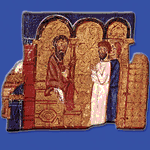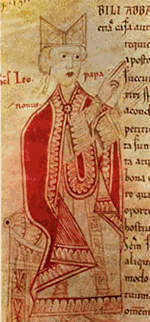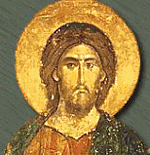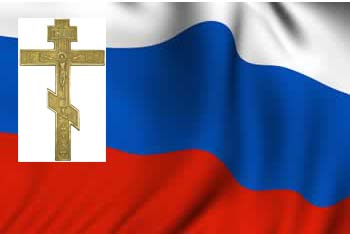Great Schism
|
The East-West Schism, or the Great Schism, is the historic sundering of eucharistic relations between the See of Rome (now the Roman Catholic Church) and the sees of Constantinople, Alexandria, Antioch and Jerusalem (now the Orthodox Church).
It divided medieval Mediterranean Christendom into Eastern and Western branches, which later became known as the Eastern Orthodox Church and the Roman Catholic Church, respectively.
|


|
|
The schism between the Eastern and Western churches is traditionally dated to 1054, although the precise point at which the split became a fixed and lasting reality is difficult to determine.
As early as the fourth century A.D., there were cultural, sociological, political and linguistic differences between the Christians of Eastern and Western Europe which eventually led to separation in the Church.
The Eastern Christians spoke Greek where the Western Christians spoke Latin. Where the Eastern Church's administration was governed by a group of bishops (i.e., Constantinople, Alexandria, Antioch and Jerusalem) which shared a common language and cultural background.
The Western Church's administration was governed by a single bishop: the bishop of Rome.
All these factors led to some basic theological differences between the Orthodox Church of the East and West.
By the eleventh century A.D. the differences between East and West became great enough to cause a separation of the One Holy Orthodox Catholic Church. The Eastern Church became known as the Eastern Orthodox Church and the Western Church became know as the Roman Catholic Church, for it was governed and administered by the bishop or Pope of Rome.
Again it must be emphasized that there were many factors besides theological ones which led to the schism of the one Christian Church. However, some theological issues which were promulgated by the Western Church were never and are not to this very day accepted by the Eastern Church such as:
- the infallibility of the Pope of Rome on matters of Church doctrine;
- the universal jurisdictional authority of the Pope of Rome;
- the doctrine of Purgatory;
- the immaculate conception of the Virgin Mary;
- the unauthorized addition of "and the Son" to the eighth article of the Nicene Creed, et. al.
The heated disputes over such matters as the ecclesiastical calendar, the use of leavened or unleavened bread, or additions to the Creed (notably the filioque clause) reached a climax in 1054, when Pope Leo IX and Patriarch Michael Cerularius excommunicated each other. Technically, only a few people were affected by this action, but the tone had been set and the direction fixed.
Later attempts to reunite the churches foundered on local feeling, and mutual hatred grew through selfish acts on both sides during some parts of the Crusades; the low point was the sacking of Constantinople in 1204 during the Fourth Crusade. The schism continues to the present, but recently serious attempts at mutual understanding have offered the hope of reconciliation.
To Top |
Information
Michael I Cerularius (c. 1000-1059), also known as Michael Keroularios or Patriarch Michael I, was the Patriarch of Constantinople (present-day İstanbul) from 1043 to 1059.
Cerularius was patriarch at the time of the schism of 1054, which formally separated the Eastern Orthodox church from the Western Roman Catholic church. In 1043, three years after he became a monk, he was named patriarch by the Byzantine emperor Constantine IX, with whom he had conspired to overthrow the previous emperor, Michael IV.
Cerularius was stridently anti-Latin and particularly resentful of Rome's claim of primacy over all Christendom. In 1054 a legation sent by Pope Leo IX issued a bull excommunicating him and the whole Eastern church.
Cerularius answered by rejecting the papal assertion of supremacy and presenting an encyclical asserting Byzantine independence from and equality with the Western church. Cerularius also asserted the superiority of the church over the state, a position that led to his eventual dethronement and exile by the Byzantine emperor Isaac I.
Pope Saint Leo IX (June 21, 1002 – April 19, 1054), born Bruno of Eguisheim-Dagsburg (German Bruno von Egisheim-Dagsburg), was Pope from February 12, 1049 to his death. He is regarded as a saint by the Roman Catholic Church, with the feast day of April 19. Leo IX is widely considered the most historically significant German Pope of the Middle Ages.
To Top
|
|
Type your query in the box below:
|
|
|

